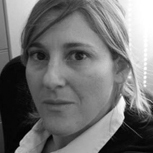Joining up the thinking capacity of textile specialists, biologists and health & food seaweed application specialists, with the production capabilities and business experience of a major industry player, At-Sea Technologies holds a promise to be a market revelation for industrial-scale seaweed cultivation. Their patented substrates for seaweed cultivation already won Sioen Industries the Techtextil Innovation Award 2015, in the category New Materials, together with Centexbel, the Belgian Textile Competence Centre.
The story starts with the EU FP7 project At Sea, which Sioen Industries coordinated, dedicated to the development of advanced technical textiles to demonstrate the technical and economic feasibility of open sea seaweed cultivation for a sustainable and renewable source for food and feed additives, for biochemical and biomaterials, and for bioenergy. The concept to be proven was a sensibly increase in the open-sea seaweed harvest yields by introducing one-two extra dimensions to the algal cultivation techniques, traditionally based on the use of lines, or ropes.
Bi-dimensional fabrics were utilised for the purpose, with surfaces engineered to provide a most suitable growing habitat to the algae, endure the harsh environmental conditions which they are exposed to and prevent the growth of unwanted plants or molluscs. These advanced technical textiles were then cut in large strips or mats, 1 mm-thin, on which young seaweed plants would grow, kept at a depth of 2 meters beneath the sea surface until they reached 1-2 meters in length, in springtime, when the seaweed was harvested for further processing.
The project rapidly showed that the textile can yield up to 16 kg of wet seaweed per square meter, i.e. three to five times the yield of traditional seaweed farming.
The feel good factor in this story lies beyond the merit of a research project in supporting a potentially very rewarding economic spin-off experience, contributing to the EU Blue Growth policy. The innovation proposed can provide support to the preservation of natural algal populations and avoid the depletion of a stock which is more and more in demand at a global scale.
AT~SEA project, www.atsea-project.eu


